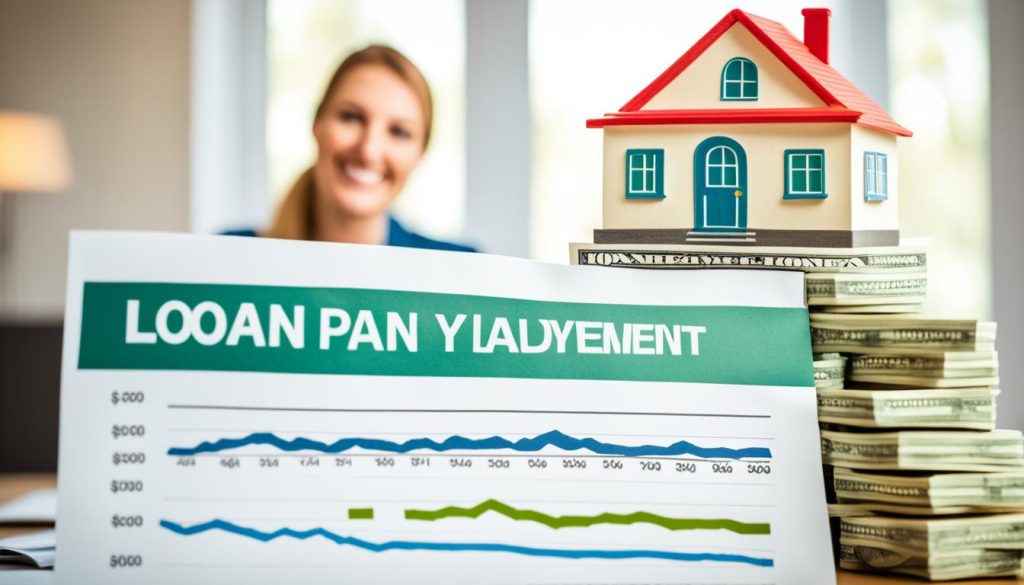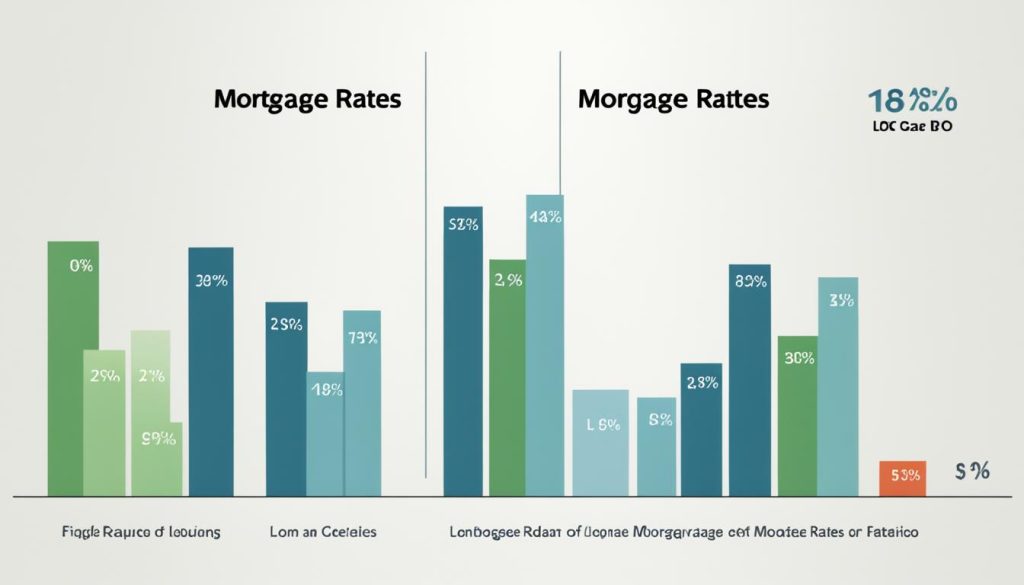The loan-to-value (LTV) ratio plays a vital role in the world of mortgages. It helps determine the amount you can borrow and the terms of your loan. But what exactly is the loan-to-value ratio, and how does it work?
How to Calculate the Loan-to-Value Ratio?
Calculating the Loan-to-Value (LTV) ratio is a straightforward process that helps you understand the financial position of your mortgage. To calculate the LTV ratio, you must divide the mortgage amount by the appraised value of the property.
For example, let’s say you are purchasing a home appraised at £200,000, and your mortgage amount is £160,000. To calculate the LTV ratio, you will divide £160,000 by £200,000 and then multiply by 100 to express the result as a percentage. In this case, the LTV ratio would be 80%.
To calculate the LTV ratio, you have two options. The first is to use online mortgage calculators specifically designed for determining the LTV ratio. These calculators allow you to input the mortgage amount and property value, and they will provide you with the LTV ratio instantly.
Alternatively, you can calculate the LTV ratio manually by dividing the mortgage amount by the appraised value of the property. This can be done using a simple mathematical formula or a spreadsheet program to streamline the process.
Understanding the LTV ratio is essential as it affects your borrowing power, interest rates, and the need for mortgage insurance. By calculating the LTV ratio accurately, you can make informed decisions about your mortgage options and plan your finances effectively.
An Example Illustrating the LTV Calculation:
| Property Value | Mortgage Amount | LTV Ratio |
|---|---|---|
| £200,000 | £160,000 | 80% |
The Importance of Calculating the LTV Ratio:
- Determines the amount a borrower can borrow
- Affects the interest rates offered by lenders
- Indicates the need for mortgage insurance
The Importance of Loan-to-Value in Mortgages
The loan-to-value (LTV) ratio is a critical factor in mortgage underwriting, serving as a tool for lenders to evaluate the risk associated with a loan. Understanding loan-to-value in mortgages is essential to make informed decisions about mortgage options.
When considering the importance of loan-to-value, it’s crucial to grasp its impact on lenders’ risk assessments. A higher LTV ratio, indicating a small down payment and less equity in the property, is perceived as more risky. Lenders may respond by requiring borrowers with higher LTV ratios to purchase mortgage insurance or imposing higher interest rates to offset potential default risks.
By comprehending the implications of the loan-to-value on a mortgage, borrowers can evaluate their financial situations and identify the most suitable mortgage options. Initiating with a lower LTV ratio through a larger down payment can potentially lead to better terms and lower borrowing costs in the long run.

Empowering borrowers to understand the loan-to-value ratio offers the opportunity to navigate mortgage borrowing effectively. With a comprehensive understanding of loan-to-value, borrowers can ensure they make informed decisions and secure the most favorable mortgage terms in alignment with their financial goals.
Impact of Loan-to-Value on Mortgage Rates
The loan-to-value (LTV) ratio is a crucial factor that affects mortgage rates. Lenders generally offer the lowest interest rates to borrowers with an LTV ratio of 80% or below. As the LTV ratio increases, so do the interest rates.
When borrowers have higher LTV ratios, lenders perceive the loan as more risky. To mitigate this risk, lenders may require borrowers with higher LTV ratios to pay for private mortgage insurance. This additional cost adds to the overall expense of the loan.
To secure the best mortgage rates, it’s advisable to aim for a lower LTV ratio. Making a larger down payment on the property reduces the amount of the mortgage and subsequently lowers the LTV ratio. Lower LTV ratios signal to lenders that borrowers have more equity in the property, reducing the perceived risk and resulting in more favorable mortgage rates.
Understanding the impact of the LTV ratio on mortgage rates is crucial for borrowers who want to optimize their borrowing costs and secure the most favorable loan terms.

| LTV Ratio | Mortgage Rate | Description |
|---|---|---|
| 0-80% | Low | Mortgage rates are typically the lowest for borrowers with an LTV ratio of 80% or below. |
| 80-90% | Higher | As the LTV ratio increases, interest rates tend to rise, resulting in higher borrowing costs. |
| Above 90% | Higher + Private Mortgage Insurance | Borrowers may need to pay for private mortgage insurance, which further adds to the cost of the loan. |
Mortgage Options Based on Loan-to-Value
The loan-to-value (LTV) ratio has a significant impact on the availability and terms of mortgage options. For borrowers with high LTV ratios, finding lenders willing to offer them a loan can be a challenge, especially if they have a low credit score or limited income. However, there are high LTV mortgage lenders who specialize in catering to borrowers with less-than-ideal financial situations. These lenders understand the unique needs of borrowers with higher LTV ratios and offer flexible financing options.
On the other hand, borrowers with low LTV ratios have more options available to them. With a larger down payment and a lower LTV ratio, these borrowers may qualify for a wider range of mortgage products and benefit from lower interest rates. Lenders consider borrowers with low LTV ratios to be less risky, which can result in more favorable loan terms.
Whether you have a high or low LTV ratio, it’s essential to explore your mortgage options thoroughly. Consider working with a mortgage broker who specializes in your specific financial situation. They can help you navigate the market and connect you with lenders who offer suitable mortgage products based on your LTV ratio.
Benefits of High LTV Mortgage Lenders
High LTV mortgage lenders cater to borrowers with a higher LTV ratio and provide them with the opportunity to secure financing when traditional lenders may decline their applications. Here are some benefits of working with high LTV mortgage lenders:
- Flexible approval criteria: High LTV mortgage lenders often have more relaxed approval criteria, making it easier for borrowers with lower credit scores or limited income to qualify for a loan.
- Specialized loan programs: These lenders offer specialized loan programs designed for borrowers with higher LTV ratios, providing more tailored solutions to their unique financial needs.
- Competitive interest rates: Despite the higher risk associated with higher LTV ratios, some high LTV mortgage lenders offer competitive interest rates to attract borrowers and remain competitive in the market.
- Opportunity for homeownership: By working with high LTV mortgage lenders, borrowers with limited funds for a down payment can still achieve their goal of homeownership.
Benefits of Low LTV Mortgage Options
Having a low LTV ratio opens up various advantages for borrowers. Here are some benefits of opting for a low LTV mortgage:
- Lower interest rates: Borrowers with low LTV ratios typically enjoy lower interest rates, as lenders consider them less risky and offer more competitive financing terms.
- More loan options: With a low LTV ratio, you have access to a wider range of mortgage options and lending institutions, allowing you to choose the loan terms that best suit your needs.
- Potential for waiving mortgage insurance: With a low LTV ratio, you may not be required to pay for private mortgage insurance, which can save you a substantial amount of money over the life of the loan.
- Increased negotiating power: Borrowers with a low LTV ratio have stronger negotiating power when it comes to securing favorable loan terms, as lenders see them as less of a risk.
Understanding the impact of your LTV ratio on mortgage options is crucial for borrowers looking to navigate the borrowing landscape effectively. Consider your unique financial situation, long-term goals, and explore mortgage options that align with your desired LTV ratio.

Loan-to-Value Requirements for Mortgage Insurance
Mortgage insurance is often required for loans with higher loan to value (LTV) ratios to offset the increased risk to the lender. The specific requirements for mortgage insurance vary among lenders, but generally, it is required when the LTV ratio exceeds 80%. Borrowers can obtain mortgage insurance from various providers, including mortgage lenders such as Halifax, or private mortgage insurance companies. It is important to calculate the LTV ratio and understand the specific requirements of your lender to determine whether mortgage insurance is necessary.
When the LTV ratio is higher than 80%, lenders perceive the loan as more risky, and thus, they require mortgage insurance to protect themselves against potential loan defaults. This insurance provides a safety net for the lender in case a borrower fails to repay the loan.
Halifax, one of the well-known mortgage lenders in the UK, offers mortgage insurance options to borrowers with high LTV ratios. They provide a wide range of coverage options tailored to the borrower’s needs and financial situation. Other private mortgage insurance companies also offer similar services.
To estimate the LTV ratio, borrowers can use a loan-to-value calculator, which takes into account the loan amount and the appraised value of the property. By inputting these values, the calculator provides an accurate percentage that represents the LTV ratio. Understanding the LTV ratio and its impact on mortgage insurance requirements is crucial for borrowers in the UK.
It’s worth noting that the LTV ratio is not the only factor that determines the need for mortgage insurance. Other factors such as credit score, employment history, and income stability may also affect the lender’s decision. Therefore, it is advisable to consult with a mortgage advisor or lender to get a comprehensive understanding of the mortgage insurance requirements based on the specific situation.
Benefits of Mortgage Insurance for Borrowers
Mortgage insurance not only protects the lender but can also provide benefits to borrowers. By obtaining mortgage insurance, borrowers with higher LTV ratios can still secure a mortgage, even if they don’t have a substantial down payment. This allows them to fulfill their homeownership dreams and enter the property market sooner.
Additionally, mortgage insurance can provide borrowers with peace of mind, knowing that their property and investment are protected in case they face financial difficulties and are unable to meet their mortgage obligations.
Conclusion
The loan-to-value (LTV) ratio is a critical aspect of mortgage lending that greatly impacts borrowers. By understanding how the LTV ratio is calculated and its implications, borrowers can make informed decisions about their mortgage options.
A higher LTV ratio indicates a higher risk for lenders, resulting in higher interest rates and the potential requirement for mortgage insurance. However, by aiming for a lower LTV ratio through a larger down payment, borrowers have the opportunity to secure better mortgage terms and potentially save on overall borrowing costs.
It is important for borrowers to consider the impact of the LTV ratio on mortgage rates and the availability of mortgage options. Lenders typically offer the lowest interest rates to borrowers with an LTV ratio at or below 80%. Additionally, borrowers with low LTV ratios may have access to a wider range of mortgage options and qualify for lower rates.
In conclusion, understanding the loan-to-value ratio is essential for borrowers looking to navigate the mortgage lending landscape successfully. By taking proactive steps to achieve a lower LTV ratio, borrowers can improve their borrowing power and potentially save money over the life of their mortgage.
FAQ
What mortgage options are available based on the loan-to-value (LTV) ratio?
Borrowers with a high LTV ratio may face challenges in finding lenders willing to offer them a loan, especially if they have a low credit score or limited income. However, there are lenders who specialize in high LTV mortgages and cater to borrowers with less-than-ideal financial situations.
Are there any loan-to-value (LTV) requirements for mortgage insurance?
Yes, mortgage insurance is often required for loans with a high LTV ratio to offset the increased risk to the lender. The specific requirements for mortgage insurance vary among lenders, but it is generally required when the LTV ratio exceeds 80%.






